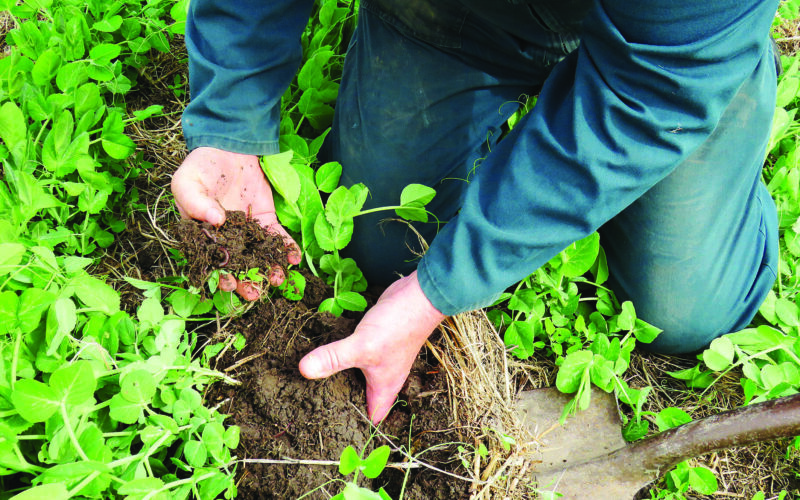We value what we grow, but how much do we know about our soil, the stuff we rely on to do its job? A recent article in the Guardian by George Monbiot, “The secret world beneath our feet is mind-blowing – and the key to our planet’s future”, is a must-read.
How healthy is the soil on your farm?
Apart from heaving on fertiliser mixes as recommended, how often do you check on its physical, chemical and biological/ecological health, using a variety of tests across all that space that you can do yourself?
With all the problems going on in the world at present, you may have discovered from your reading or watching that New Zealand is not self-sufficient in its food production.
We can eat meat and dairy products forever, but there are a lot of foodstuffs that we have to import, and when the world is in upheaval, from pandemics or wars, some of those may not be available, or the ships bringing them aren’t arriving as we usually expect.
This doesn’t mean we should panic but, as everything we eat comes from soil, maybe we need to be able to check that our soil is healthy enough to grow other crops in sufficient quantities to feed our people, which might cause some changes in how we actually farm.
Anyway, a few checks around our farms could mean that we aren’t growing as much pasture as we thought, because all that rain we are getting isn’t staying in our soil, either running off or sinking straight through because the physical properties aren’t quite right.
Or the chemical balance isn’t working properly because our fertiliser mixes have too much of one chemical and are missing some of the other necessary ones, only needed in small quantities.
And how alive are our soils?
Do we have sufficient, or a balance of, the critters (fungi, bacteria and all the small ones moving around there) who are the symbiosis experts, who keep the right things moving in the right directions?
Is the constant plant cover adding the carbon and sugars, and swapping them for the things plants need but can’t produce themselves?
We need all three of these factors to ensure that our soil is properly aggregated, so the fungal filaments are holding the knobbly bits together, but leaving spaces so the air and water are held in sufficient quantities to give the critters some air, and the water is held where it is useful. And are the chemicals in the right forms for the plants to use? This calls on the critters to make the necessary changes to them if they aren’t. When the weather produces a big dry or a big wet, we need not only plants that can cope, but the soil itself has to hold together and not be blown or washed away.
Our reading, and the courses we’ve joined over the past year, have shown the enormous amount of new research going on all over the world on soil life and how it works together.
We are only just learning how fungi and bacteria got our world started, and are keeping it going, along with plants and animals.
Their methods are based on symbiosis, which is an overall give-and-take system, where each facet helps the others while taking what they need themselves.
Farming has long been based on what we can get out of soil, rather than working with it.
This, and our propensity for putting hard development on the surface, has not only reduced the productive areas, it has also killed off the life sources within much of the rest of it, resulting in increasing areas of desertification and unproductive land.
It is possible to get working ecosystems going again, but you need to know how to do it. And soon!
When we looked around to find information on suitable tests we can mostly do ourselves, there were bits here and bits there, but nothing all in one place that we could study.
So over the coming weeks we are going to give you a series of articles that show you what test is good for what problem, and then we hope to put them all together in a downloadable booklet that you can grab from several websites.
Who am I? Sue Edmonds is a farming and science writer from Waikato.






